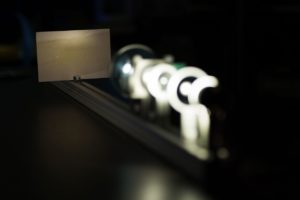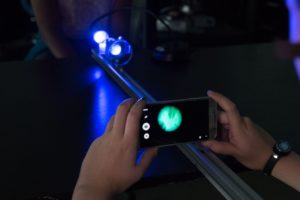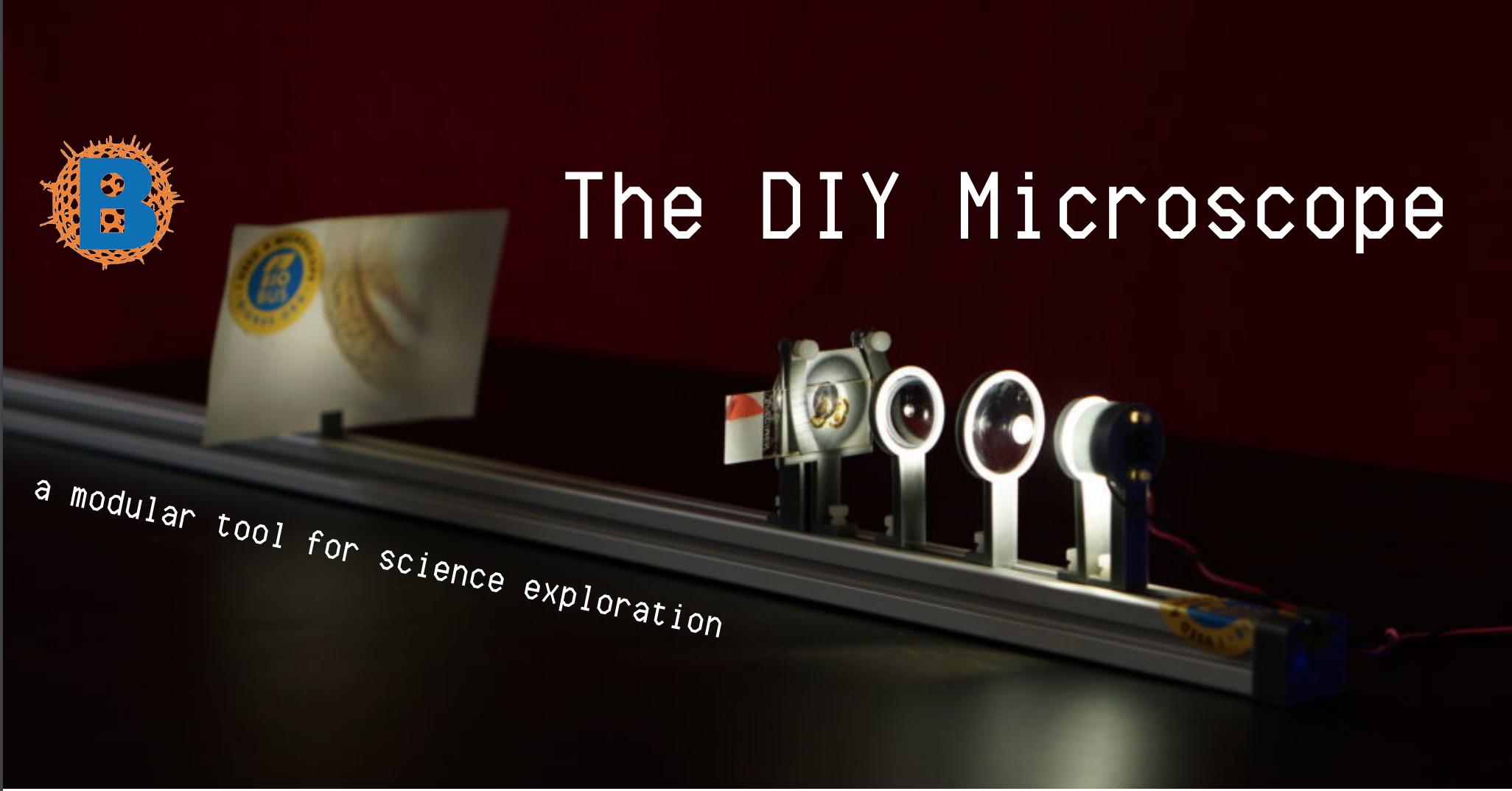High quality lab grade microscopes can cost upwards of hundreds of thousands of dollars, and students are often intimidated by them. A lack of exposure to these optical instruments means that students never get the chance to actually learn how microscopes work and how they can build and design their own.
In response to this problem, the DIY microscope was developed by Francesca Anselmi from BioBus (www.biobus.org) and Josh Sanders from Sanworks (https://sanworks.io/) as a tool to teach students how to build their own optical instrument. The DIY microscope has also been worked on by high school and college students, who worked on developing add ons to enhance the imaging capabilities of the microscope and created didactic materials to go along with it. The microscope is always being experimented with and improved by students.
Why is the DIY microscope unique?
By demystifying a tool that conventional wisdom says is “complicated”, the DIY microscope introduces the practice of “learning by making” and liberates the inner engineer within each student. 3D printing the microscope reinforces the concept of “learning by making”, empowering students with the skills and knowledge to build complex tools and is in itself an educational activity.It is cost-effective, and can easily be built by everyone with access to a 3D printer. Similar development kits have been assembled from commercial parts, but for at least 10 times the price, making them impractical for most families, schools and BioBuses. The overall cost of the BioBus DIY kit is less than $200.It serves as the starting point for further exploration! The DIY microscope was designed to be a modular kit, where the elements can be rearranged by the students to implement different designs. As BioBus interns demonstrated, the DIY microscope is also a backbone for more advanced and original developments, limited only by the builder’s imagination.
 Why 3D Print?
Why 3D Print?
Plastic, unlike metal, is very elastic so it is possible to press fit components (lenses in this case) into a plastic mount. The obvious advantage of 3D printing is the massive (>10X) reduction in cost, and the possibility to distribute the design files to school and non-profit entities.

